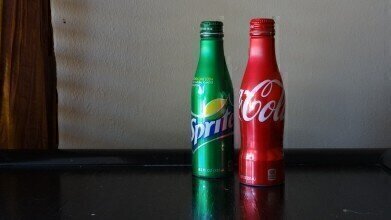Laboratory Products
What Role Does Refractometry Play in Soft Drink Analysis?
Mar 25 2021
Assessing the amount of sugar, acidity and other vital properties of the finished product is integral to the success of any soft drinks company. Not only must they ensure that their beverages maintain consistency in taste across the entire range, but they must also quantify the concentrations of sugar in their drinks to comply with legal national limits. That’s especially true in the light of recent legislation aimed at curbing obesity in the UK, Europe and beyond.
Refractometry is a highly popular technique of analysing substances such as soft drinks, since it is capable of assessing their composition or purity. It works by calculating the wavelength of light and temperature of a substance (often a liquid), analysis of which can yield useful information about the substance’s compositional makeup.
Brix determination
More stringent regulations surrounding the sugar content of commercial beverages means that producers must now quantify the concentrations of sugars in their soft drinks and juices, both from the initial concentrate and in the finished product. Traditionally, this is performed using the Brix determination, which measures the concentration of a single gram of sucrose in 100g of the sample.
To achieve that measurement, most laboratories use a refractometer, also known as a Brix meter. These reliable instruments are capable of delivering fast, accurate results on the compositional makeup of a soft drink, ensuring that manufacturers do not fall afoul of their legal obligations. As well as measuring sucrose content, refractometers are also invaluable tools in quantifying concentrations of bases and acids as well, providing a modern alternative to the traditional technique of titration.
Added benefits
New developments in the technology have eliminated certain time-consuming steps in the refractometry process. For example, measuring carbonated soft drinks used to involve the neutralisation of the bubbles in the sample via an additional degassing phase, while juices had to be filtered in order to remove the pulp and guarantee the purity of the results. Thankfully, there are now refractometers models which are capable of bypassing these steps, thus facilitating and expediting the process.
These innovations do not affect the quality or reliability of the results, either, ensuring that refractometry is sure to play an integral role in soft drink evaluations for years to come. It’s just one facet of the fascinating world of food and drink research. The article Food Analysis Has Never Been So Challenging or Exciting holds more information on the latest developments in this area for those interested.
Digital Edition
Lab Asia 31.2 April 2024
April 2024
In This Edition Chromatography Articles - Approaches to troubleshooting an SPE method for the analysis of oligonucleotides (pt i) - High-precision liquid flow processes demand full fluidic c...
View all digital editions
Events
Apr 28 2024 Montreal, Quebec, Canada
May 05 2024 Seville, Spain
InformEx Zone at CPhl North America
May 07 2024 Pennsylvania, PA, USA
May 14 2024 Oklahoma City, OK, USA
May 15 2024 Birmingham, UK


.jpg)















